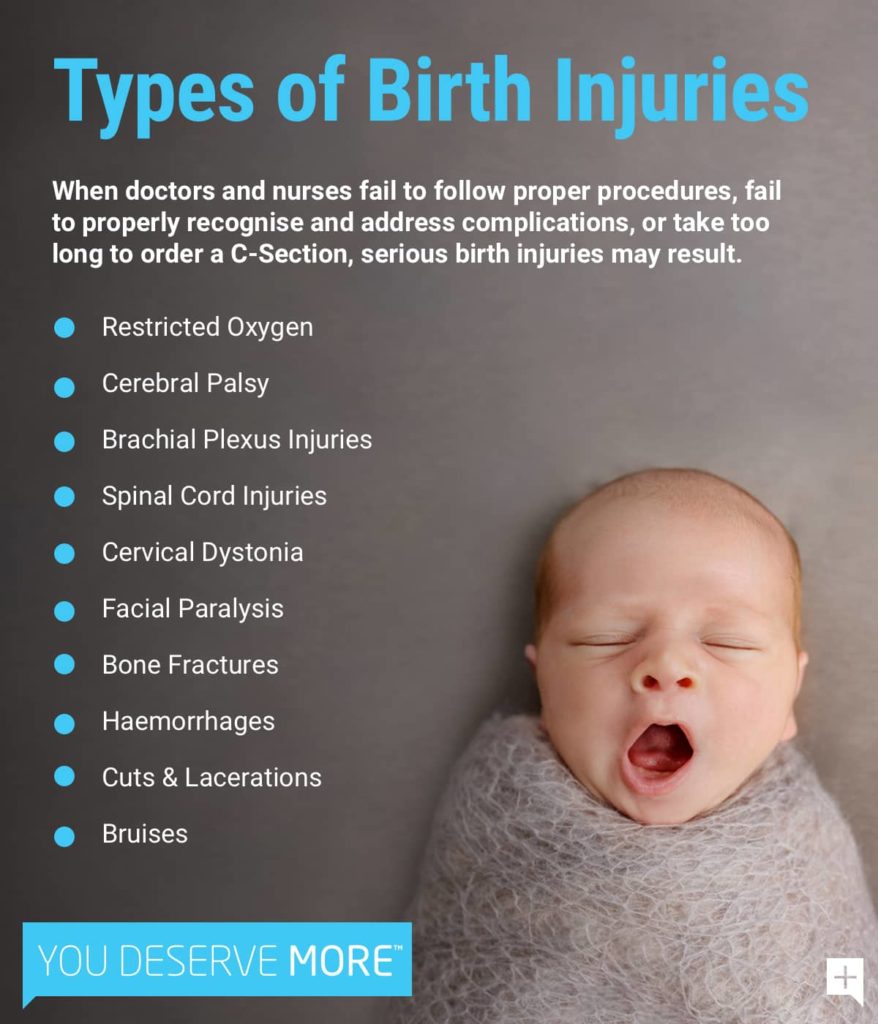We Bring Together The Right Combination Of Experience, Knowledge And Sensitivity To Get Clients Compensation For Pregnancy And Birth Injury Claims.
Arguably the most traumatic and stressful area of compensation law, birth injury claims not only require the right mix of specialist skills and knowledge, but also a level of sensitivity for the persons involved.
The key focus for us in these cases is on exploring whether an error has occurred, and if it has, making sure we are best prepared to counter any defence raised by the insurance lawyers.
Taking into account the potential large damages that are available (due to the long term care that a child will need) these claims are usually vigorously defended and a great deal of time and investigation is needed to explain all the legal complications to anxious parents.
Common Birth Injuries That May Result In A Claim
Restricted Oxygen
Also called anoxia or hypoxia – along with trauma during the delivery process are among the most common causes of injuries in newborns. Oxygen deprivation at birth can have several causes. For example, complications could result in the infant being left in the birth canal too long or the umbilical cord could wrap around the baby’s neck, constricting airflow. Misuse of delivery tools such as forceps or vacuum may cause a traumatic injury, particularly if the child is in a breech position and must be repositioned.
Some of the most common and most disabling birth injuries include: Hypoxia or anoxia. Brain damage may result if the flow of oxygen to the brain is restricted. A partial loss of oxygen may cause a hypoxic injury, while total oxygen deprivation may result in an anoxic injury. Typically, the damage to the brain becomes more severe with the completeness and length of oxygen deprivation. Both hypoxia and anoxia may result in severe cognitive impairment. Hypoxic and anoxic injuries may also harm physical, psychological and other functions. While therapy may improve the condition of some injured victims, these injuries are often permanent.
Cerebral Palsy
This incurable condition permanently affects an injured child’s posture and ability to move and maintain balance. Trauma to the head or restricted oxygen during labour and delivery can cause cerebral palsy. Children who have cerebral palsy may be never be able to walk or take care of themselves when they grow up. The most severe cases may cause epilepsy (seizures), hearing or vision loss, or intellectual deficiencies.
Brachial Plexus Injuries
The brachial plexus consists of a bundle of nerves in the neck that connects to the arms, hands and shoulders. Damage to the brachial plexus may occur when too much pressure is applied to an infant’s head or neck during delivery. This type of injury can cause paralysis in the neck, shoulders, arms or hands, as well as loss of muscle control, strength and sensation. Erb’s palsy refers to damage to the upper nerves, while Klumpke’s palsy refers to damage in lower nerves. Infants who suffer injuries to the brachial plexus often need physical therapy and surgery to graft or transfer nerves or muscle to bypass paralyzed areas.
Spinal Cord Injuries
Damage to the spinal cord may result from excessive traction or rotation during delivery. Stillbirth or neonatal death may follow the most severe spinal cord injuries. If a newborn survives a spinal cord injury, the baby may experience paralysis, weakness and hypotonia (low muscle tone and strength). Often, spasticity similar to cerebral palsy will develop later.
Cervical Dystonia
Also called spasmodic torticollis, cervical dystonia results from an injury to the head, neck or shoulder during labour and delivery. The condition can cause muscles in the neck to contract and pull the head forward, backward or to the side. A painful and disabling injury, affected infants often need a lengthy physical therapy and medication. Multiple surgeries may be required to cut contracted nerves or muscles. Treatment of the most severe cases may involve deep brain stimulation, which involves surgical implantation of an electrode in the brain to interrupt the signals that cause twisting of the head.
Facial Paralysis
A baby’s facial nerve may be damaged when pressure is applied to the face in the delivery process. The child’s facial paralysis could improve in a matter of weeks if the nerve was only bruised. However, surgery may be required if the nerve was torn.
Other Injuries
Newborns may suffer a series of other injuries during the birth process, such as cuts, bruises lacerations, abrasions, haemorrhages and bone fractures.
Did Medical Negligence Cause The Injuries?
Many birth injuries didn’t have to happen. They could’ve been avoided if obstetric risk factors had been anticipated and recognised. Modern tools such as ultrasound machines and foetal monitors provide information that should allow an obstetrician to recognise that a vaginal delivery could be dangerous, allowing the doctor to opt for a Caesarian delivery instead.
Training for labour and delivery doctors and nurses emphasises the importance of monitoring the oxygen levels and other vital signs of both the mother and the baby during labour, delivery and neonatal care. Hospitals and other medical centres that provide obstetric care have certain procedures for how to treat a mother or baby who is showing signs of distress due to low oxygen or other problems. This protocol usually involves performing a C-section when there are certain indicators of a difficult delivery.
When doctors and nurses fail to follow proper procedures, fail to properly recognise and address complications or take too long to order a C-Section, serious birth injuries may result. These errors may amount to medical negligence.
When negligence results in serious birth injuries, compensation may be available through a medical negligence claim. This compensation could include money to pay for the family’s losses and the injured baby’s ongoing needs – including medical expenses, lost wages, pain, suffering and loss of enjoyment of life.
Why Choose Henry Carus + Associates?
Our birth injury lawyers will do everything we can within the law to obtain the maximum compensation payout for families who are faced with the often crippling, long-term costs of caring for a birth injured child.
Our 360° approach involves:
Gathering detailed statements from all involved.
Seeking advice from medical experts.
Following the normal process of any general common law medical negligence claim.
Focusing on the long term care needs of the child.
Negotiating a successful outcome based on the strength of the claim.
 Call Us Today
Call Us Today


